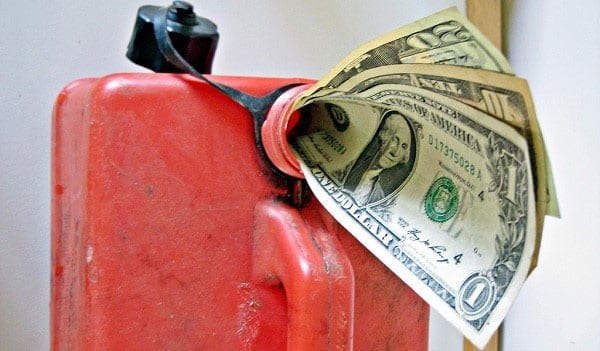How to Optimize Your Fuel Savings for This Fall
October 16, 2017
7 Ways to Optimize Your Fuel Savings
Fleet managers cannot control the factors that drive up national fuel prices year in and year out. These price hikes can decimate a company’s bottom line, leaving many wondering what they can do to minimize the impact. Thankfully, there are steps managers can take to optimize their fuel savings and lessen the blow they will receive this fall. Here are seven ways that you can make a difference for the last part of the year.

Optimize fuel savings by knocking out bad practices. You might be surprised at the savings.
1. Stop the Idling
A typical fleet vehicle can waste up to 0.4 gallons of fuel per hour when idling. That might not sound like much, but consider that idling for one hour a day would come out to about 96 gallons of fuel a year. Now tack that amount on to each vehicle in your fleet- still seem small? Even if fuel was as low as $2 a gallon, that would still add up to $192 per vehicle.
Interested in seeing how it would impact your fleet? Track how much idling is costing your company by using this free calculator from fleetcardusa.com. It’s a great way to start thinking about how to optimize those fuel costs.
2. Easy on the Gas, and Easy on the Brake
Rapid acceleration and braking can take a serious toll on any vehicle’s gas mileage. On average, fuel economy can be lowered by 30 percent on the highway when drivers practice these bad habits. Hold your drivers accountable for how they handle their vehicles on the road.
3. Maintain Tire Pressures
As the temperature cools, tire pressure changes. If the air in your fleet vehicles’ tires is over or under the correct psi, it’s lowering the fuel economy. A drop in tire pressure is more often the case with daily-use vehicles and colder weather, making it crucial for your drivers to stay on top of their psi levels this fall.
4. Plan Faster Routes
Reevaluate the routes your drivers take. Is there a more efficient way for them to reach their destination? It isn’t always possible to re-plan fleet routes, but it is worth looking into. For instance, there may be a tunnel that notoriously slows down traffic a driver could avoid by taking different route. While the detour may seem longer, it would save them time idling in traffic.
5. Maintain the Engines


Simple upkeep on fleet vehicle engines can improve fuel mileage by up to five percent. With costs rising on the horizon, that percentage can make all the difference in the world. All you have to do is have the cars inspected for possible repairs and minor maintenance. While you’re at it, have them double-check the wheel alignment. Even if a vehicle is off by a smidgen, it can increase the drag, which significantly lowers fuel economy. Vehicles like backhoes and semi-trucks are highly susceptible to misalignment due to the weight they carry around.
6. Set It to Cruise
If the vehicles in your fleet are equipped with a cruise control feature, instruct each and every driver to use it while it on the highway. For example, these nifty devices can increase highway fuel economy by up to 10 percent.
7. Lessen the Load
Oftentimes, fleet vehicles are carrying around extra tools, parts, equipment or even product that they will not need for the route they are on. Anything adding weight to a vehicle is slowing it down. Have your drivers unload anything that isn’t necessary for today’s route.
In Short: Make It Easier on Your Wallet and Optimize Fuel Savings
Times are tough enough without gas prices going up again, but follow these tips and your company will be able to soften the blow and save hundreds on the cost of fuel.
About the Author: Wendy Dessler
Wendy is a super-connector with Outreachmama, which helps businesses find their audience online through outreach, partnerships and networking. She frequently writes about the latest advancements in digital marketing and focuses her efforts on developing customized blogger outreach plans depending on the industry and competition.


